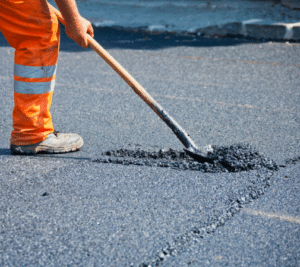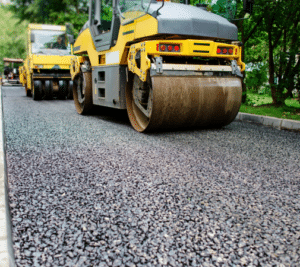Construction grading is essential, whether small or large, no matter what you’re building. Without it, your construction project can easily have multiple issues and problems with the structure.
Before you start any project, ensure you fully understand grading and how to do it. The last thing you want is to create problems for your project that were entirely avoidable. Here’s what you need to know:
What is Grading in Construction?
When it comes to construction, grading is an important process that needs to happen for a successful build. Grading is the process of reshaping the land at the site of the construction project to prepare the ground for the weight of the build and to create drainage.
The process of construction grading can include lowering and raising the ground level, removing or adding slopes, and ground surface leveling. The amount and type of grading each project needs will depend on the project’s specifics.
There are different types of construction grading, ensuring that you can improve the land to suit your needs no matter what your project entails or the various land issues you’ll have to deal with.
How is Construction Grading Done?
Before grading, a professional grading plan must be created. This includes outlining the reshaping of land, which must be approved before continuing. This outline should include the following:
● Name and address of property owner
● Reason for project
● Any trees, utility lines, structures, or other features of interest
● Property lines
● Any existing or proposed land contours
● Proposed grading volume and grading boundaries
● Existing and proposed drainage features
● An erosion control plan
After approval of the grading plan, the process of grading can start. You’ll probably want to use heavy machinery, including bulldozers, rototillers, tractors, motor graders, and more. Follow your plan to ensure that grading is done correctly.
Types of Construction Grading
Construction grading types include regrading, landscape, architectural, rough, finished, and final grade.
Regrading
The land’s level is lowered or raised in regrading, ensuring proper drainage and preventing damage.
Landscape Grading
With landscape grading, you will reshape the land. This is often done through topsoil removal, irrigation installation, and leveling or sloping ground. Doing so prepares it to add elements such as grass, water, and planters.
Architectural Grading
This is the process of reshaping the land to get it ready for a construction build. With this type of grading, you will level the construction area, prepare the foundation by digging a level hole and remove any elevations you don’t want.
Rough Grading
In rough grading, the shapes and elevations of the project are created. For this type of grading, heavy machinery is often used to remove land. It can also sometimes include adding topsoil.
Finished Grading
Finished grading occurs after rough grading. This is when the final shapes and elevations are created to plant, lay gravel, and perform final additions.
Final Grade
This is the last step in landscaping. Sand or topsoil is laid on top in preparation for seeding to begin.
Why You Need Construction Grading
Grading the land before any construction project is just as crucial as pre-project preparation and planning. It impacts both the project itself and the other buildings in the area. When grading is not done or not done correctly, structural damage often occurs as water runoff moves toward the building instead of away from it. Water accumulates around and/or under the foundation creating hydrostatic pressure that can cause damage to the structure.
If grading is not adequately done, water and other pollutants can lead to surrounding buildings and properties. Erosion can occur from a lack of landscape grading that causes property damage and other concerns.
In many situations, approved grading plans are required before construction begins by zoning and planning regulations. Preparedness by completing construction grading is the best option for having a ready, safe, and successful construction build.
Conclusion
Construction grading is essential before any construction project. It is the best way to properly prepare the land for a structure to be built, ensure adequate drainage, and create the desired look of the land.
When done well, construction grading can prevent many issues with any project. Make sure to follow the appropriate grading method, and you’ll be set to begin.
If you’re in the Tuscon and have an upcoming project requiring grading, call (520) 394-8480! Our team members at Saguaro Asphalt are highly skilled in construction grading and other services, including asphalt paving and repair. Our team can make sure your surface is ready!



